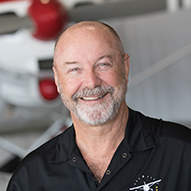
More than one student pilot has found himself in a quandary when he realizes the math for takeoff procedures doesn’t seem to add up. There are two climbout speeds that we aim for when we’re taking off: best angle of climb (VX) or best rate of climb (VY). Yet there are three takeoff procedures. Which speed should be used for which takeoff, and why?
As with most tasks we encounter in flight training, the answers are in the practical test standards (PTS). Whether you’re preparing to become a sport, recreational, or private pilot, you need to know how to perform normal and crosswind takeoffs, short- field takeoffs, and soft-field takeoffs.Each has its own specific requirements, and those requirements aren’t open to broad interpretation, personal opinion, or a best guess. They’re written down for us to learn and use religiously when we fly.
That’s important news for any applicant, because the examiner youfly with will be well versed in the correct procedures for each takeoff, and he or she expects to see you follow the guidelines included in the PTS every time you take on a task.
The PTS stipulates that you use the best rate of climb (VY) for a normal or crosswind takeoff. Best rate is the speed designated by the airplane’s manufacturer that provides the greatest increase in altitude over a given period of time. The pilot’s operating handbook for your airplane will include a specific speed for VY that won’t change with weight or weather,but will with altitude (see “Altitude Alteration”). VY is VY under all circumstances for those who fly light general aviation aircraft.
For example, the classic Cessna 172 has a published VY of 78 knots indicated airspeed (KIAS). The Cirrus SR22 lists VY at 101 KIAS, while the lighter, Light Sport-compliant Tecnam P92 Echo lists VY at 68 KIAS. That disparity in numbers suggests that looking up VY in the handbook and using the appropriate number for the airplane you’re flying is critical to success—whether you’re making training flights or taking your practical test.
It’s a good idea to keep using the appropriate speeds long after your checkride has passed, too. Good habits lead to safety, and a primary component of establishing good habits is to stick with the proper procedures you’ve learned whenever you fly, whether or not anyone is watching.
A short-field takeoff is designed to do exactly what it sounds like. It’s the procedure to use when the runwayyou’re operating off of is short. Not so short that your performance charts suggest a takeoff attempt is foolhardy, but short enough that you don’t have the runway length to take off using the normal procedure and still have an acceptable margin of safety.
For many aircraft, the short-field takeoff procedure includes a configuration change. If your aircraft has flaps, it is likely that your short-field takeoff checklist includes a specific flap setting in order to increase lift and get you into the air at a slowerspeed, using less runway in the process. When you get airborne you will pitch for the best angle of climb speed, also known as VX. This is the speed that will get you the most altitude in the shortest distance.
In training, we typically imagine that a 50-foot-tall obstacle is right off the end of the runway. So for the short-field takeoff we configure the airplane appropriately, accelerate down the runway, rotate, and climb at VX until we’ve cleared the height of the obstacle. Once you’re above that height you can safely lower the nose a bit to establish the higher climb speed represented by VY, and reconfigure the airplane by retracting the flaps.
For all its benefits, VX has some limitations that keep us from using it for long periods of time. With the nose held high and the slower air-speed, air-cooled engines don’t cool as well. The nose-high attitude also can make visibility an issue. So the transition to VY from VX isn’t cheating at all—it’s actually recommended. In fact, the PTS makes it clear that this transition is expected during a short- field takeoff.
The Cessna 172 POH lists VX as64 KIAS; for the Cirrus SR22 it is 78KIAS, and for the Tecnam Light Sport airplane, it is 60 KIAS.
The soft-field takeoff combines the use of VX and VY, as well. The object is to get the airplane in the air at the slowest speed possible, then accelerate to either VX or VY, whichever is appropriate, while still in ground effect. Ground effect is the increased lift found within about half a wing-span above the surface. Whether you should aim for VX or VY will depend on either the actual conditions of the field you’re flying out of, or the instructions of your flight instructor or examiner. If you’re asked to simulate a soft-field takeoff with a tree at the end of the runway, accelerate in ground effect to VX, climb high enough to clear the obstacle, then transition to VY. If there’s no obstacle, go ahead and accelerate to VY in ground effect, then climb out normally, retracting the flaps once you’ve reached a safe altitude.
Adapting to VX, VY, and the three takeoff procedures isn’t hard at all once you understand when to use VX,when to use VY, and when to combine them to safely accomplish the task at hand.



